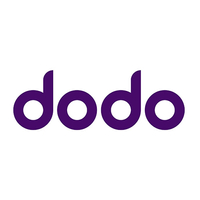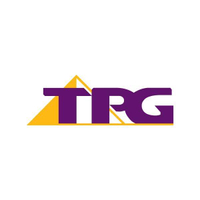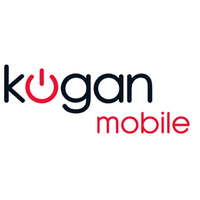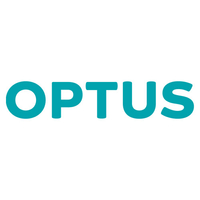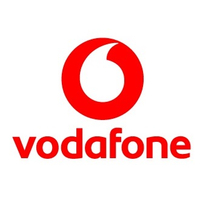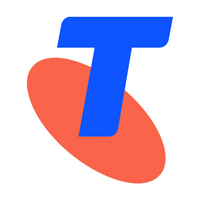Compare the best mobile phone plans and deals in Australia
Find the best value mobile phone plan in Australia right here

The best phone plans aren't just those that offer you the highest number of benefits – it's that which provides the customer with exactly what they need at a suitable price.
Australia has three major telcos – Telstra, Optus and Vodafone – but there are also dozens of smaller telcos, or MVNOs. And between them, there are an abundance of great plans that target Aussies of all kinds, from the most budget-conscious to the biggest data eaters. The best Vodafone plans and Best Optus plans are viable options here, but they're most easily recommended for those looking to pair a new smartphone with a phone plan. If you're already set for a phone, the best SIM-only plans, and the options below will be more applicable and flexible to your needs.
That’s where we come in. We’ve gone over the best phone plans in Australia and found eight standout options that’ll work nicely for various needs.
Prices, perks and inclusions are constantly changing, so it’s always a good time to look around and compare your options – you might find a better deal than what you’re currently using. It's always worth keeping an eye on what Telstra, Optus and Vodafone are offering, as some limited-time deals are worth jumping on, but don’t count out smaller telcos.
Jump to:
• Best overall postpaid plan – Circles.Life 50GB for AU$17.50p/m
• Best cheap postpaid plan – Circles.Life 20GB for AU$10p/m
• Best high data postpaid plan – Circles.Life 125GB for AU$30p/m
• Best overall prepaid plan – TPG 25GB for AU$12.50 per 1-month renewal
• Best long-expiry prepaid plan – Kogan Mobile 300GB for AU$179 per 365 day renewal
• Best Optus plan – Optus 50GB for AU$52p/m
• Best Vodafone plan – Vodafone 50GB for AU$44p/m
• Best Telstra plan – Telstra 50GB for AU$65p/m
Best overall postpaid plan
Dodo | 30GB data | No lock-in contract | AU$14p/m (for 3 months, then AU$28p/m)
While there's plenty of competition when it comes to postpaid plans, especially when you get into the 25GB-30GB plans, this Dodo plan is undoubtedly the best. Right now, you'll get 50% off your first three months, bringing the price down to just AU$14 for 30GB of data. Tangerine is actually offering 50% off the first four months on its 25GB plan, but a AU$1 more expensive with less data makes this Dodo plan the one to grab.
Total minimum cost is AU$14 | Total cost for first year: AU$294 | Yearly cost after discount: AU$336
Best cheap postpaid plan
Dodo | 15GB data | No lock-in contract | AU$23p/m
If your main focus is cutting costs wherever possible, then this 15GB plan from Dodo for just AU$23p/m is worth considering. You get 4G connectivity as part of the Optus mobile network, as well as $100 International call credit, no charge for exceeding your data limit and data banking up to 500GB. If you don't mind spending more, then the AU$28 plan above is a far greater deal, even after the 50% discount goes away after three months.
Total minimum cost is AU$23 | Total cost for first year: AU$276 | Yearly cost after discount: AU$276
Best high data postpaid plan
No matter what way you swing it, Vodafone's SIM plan offerings are the one to have if you want large amounts of data. Vodafone recently doubled its network coverage, and it's celebrating by doubling the data of all its SIM plans – and giving them a AU$10 discount on the first 12 months. We've chosen the 100GB Small plan here, but the Medium and Large plans offer a massive 360GB and 720GB of data for just AU$49 and AU$59 each month. Oh, and you also get a three-month subscription to Binge.
Total minimum cost is AU$39 | Total cost for first year: AU$468 | Yearly cost after discount: AU$588
Best overall prepaid plan
TPG | 25GB data | 1-month expiry | AU$12.50p/m (first six months, then AU$25p/m)
This TPG prepaid plan is 50% off for your first six renewals, so you’ll initially pay just AU$12.50 for 25GB of data. After that discount ends, you’ll be paying AU$25 for each 28-day renewal. TPG’s prepaid plans auto-renew every month until you cancel. This TPG prepaid plan uses Vodafone’s 4G network, while more expensive plans have access to the 5G network.
Total minimum cost is AU$12.50 | Total cost for first year: AU$225 | Yearly cost after discount: AU$300
Best long expiry prepaid plan
Kogan Mobile | 500GB | 360-day expiry | AU$199
Kogan Mobile takes the best long expiry title for its Large plan, but it's actually beating out another Kogan plan that provided 300GB of data for AU$179. This plan includes the ability to earn Qantas points as you pay, operates on the Vodafone 4G network and provides Kogan's AU$300 plan for just AU$199 – along with its massive 500GB data amount. I
Total minimum cost is AU$199 | Total cost for first year: AU$199 | Total cost without discount: AU$300
Best Optus plan
Optus Small plan | 50GB data | No lock-in contract | AU$52p/m
Value for money is rarely strong with the major telcos, but Optus is at least giving it a red hot crack. 50GB data is a brilliant allowance, though you'll never really run out – your speed will just be reduced to 1.5Mbps once you surpass that 50GB limit. You'll also get access to the Optus 5G network and Optus SubHub, which lets you manage subscriptions in one place and save up to 10% by adding three or more subscriptions.
Total minimum cost is AU$52 | Total cost for first year: AU$624
Best Vodafone plan
Vodafone’s cheapest phone plan is actually packed with value. Right now, you can get the plan with a 12 month discount, bringing the monthly cost down to AU$39p/m for 12 months before it reverts to the regular AU$49p/m. The double data will stay for your entire contract, though and you also three months of Binge streaming. This plan offers access to Vodafone’s 5G network, and if you travel overseas, you can also get international roaming for an extra AU$5 a day.
Total minimum cost is AU$39 | Total cost for first year: AU$468 | Yearly cost after discount: AU$588
Best Telstra plan
Telstra Basic plan | 50GB data | No lock-in contract | AU$65p/m
With a 2024 price increase from AU$62p/m to AU$65p/m, Telstra has the most expensive phone plans among the three major telcos, by a long way. The benefit of Telstra is its wide-reaching network coverage and big data limits, but Optus has been nipping at its heels for awhile – now boasting the fastest mobile network – and Vodafone now matches the network coverage of Optus (reaching 98.4%) of Aussies thanks to the TPG-Optus partnership.
Total minimum cost is AU$65 | Total cost for first year: AU$780
Mobile phone deals FAQ
Which mobile network is best in Australia?
Between the three mobile networks across Australia, it’s difficult to chalk up a definitive ‘winner’. Speed is subject to so many variables at any given time that it’s difficult to truly pit the three head-to-head at an Australia-wide level, and availability varies between networks and locations.
Going off OpenSignal’s April 2024 mobile network experience report, Optus is the best provider for 5G network speeds in Australia on average, and while Telstra wins on coverage experience for both 4G and 5G, Optus wins on consistent quality. Vodafone and Optus were tied on network availability (measured on the proportion of time people had a network connection in the places they commonly visit), with Vodafone winning on 5G availability in particular.
When it comes to 5G, Telstra offers the greatest coverage across Australia, with 89% of the population able to connect to Telstra’s exclusive 5G signal with an eligible Telstra plan (per WhistleOut). MVNOs (Mobile Virtual Network Operators) operating through Telstra’s networks generally utilise the Telstra Wholesale network, which only covers 75% of the population. The only MVNO that operates on Telstra’s full network is Boost Mobile. You can view a map of Telstra’s network coverage on its website.
Vodafone hasn’t provided any figures on its 5G network, though you can view a map of Vodafone’s network coverage on the telco’s website. 80.5% of the population is covered by Optus’ 5G footprint, and just like with the other big telcos, an Optus network coverage map is available. When it comes to 4G coverage, the line between the telcos is quite thin: Telstra covers 99.6% of the population, Telstra’s wholesale network covers 98.8%, Optus covers 98.5% and Vodafone 96%.
Speaking specifically about the actual plans on offer from Telstra, Optus and Vodafone, you’ll usually find they’re some of the most expensive plans in the country (though every now and then you’ll see a bargain). If you’d like to save as much as possible, we’d recommend you check out some of the smaller providers that operate on the 4G and 5G networks run by the big three.
- Learn more details about the best Optus mobile plans
- Learn more details about the best Vodafone mobile plans
- Learn more details about the best Telstra mobile plans
What is an MVNO?
A mobile virtual network operator (MVNO) is a smaller telco that utilises a larger provider’s network to run their service. In Australia, MVNOs resell access to either the Telstra, Optus or Vodafone networks, and pricing is often lower than what the big three will offer themselves.
Some popular MVNOs in Australia include Amaysim (Optus), Belong (Telstra), Circles.Life (Optus) and Everyday Mobile (Telstra). There are also small mobile providers reselling Vodafone’s network, such as TPG and iiNet.
An important aspect to note about MVNOs is that they typically only provide partial access to the bigger provider’s network, rather than the full access which the larger telco’s customers receive. In most cases, the MVNOs also may not provide access to a carrier’s 5G network, and instead serve you with 4G and 3G coverage, though there are a few exceptions.
Most MVNOs tend to offer SIM-only plans or prepaid plans, and it’s not often you’ll get the latest flagship phones via an MVNO. One exception is Amaysim, which offers the latest iPhones along with select models from Google and Samsung.
Do I need 5G?
If you value high speeds and need them for big downloads (such as for 4K video streaming and constant high quality music streaming) then 5G should be high on your list for phone plan inclusions – although even if you’re constantly downloading, 4G should be fine for day-to-day use as long as the downloads aren’t too big (otherwise they’ll be loading slowly on your device).
There are still a lot of providers in Australia that as of right now don’t offer 5G access (and plans offered by providers that are limited to 4G), but 5G will eventually become the standard phone network band in Australia, just like 4G and 3G before it (and it will likely be followed by 6G sometime down the road).
For the moment though, while 5G is currently being rolled out by Australia’s three mobile network operators (Telstra, Optus and Vodafone), it’s still not as readily available as 4G. With this in mind it’s worth having a look at coverage maps to see which network currently offers 5G in your area.
Should I pair my phone with a plan or buy outright?
When searching for a new phone contract, there are more options now than there used to be. You could purchase a phone from a major telco and pair it with a plan, paying it off over 12, 24 or 36 months. Or, you could buy a handset outright and combine that with one of the best SIM-only plans. Some retailers such as Samsung will allow you to buy a phone and pay it off over a set period, with 0% interest.
This option of buying a phone through a telco and signing up to one of its plans tends to be the more popular option. This method is good for someone who can’t front the entire cost of the new phone upfront, or those that want an easy way to upgrade to the latest device without the huge initial cost. Telstra, Optus and Vodafone all offer these plans on a no lock-in contract, so you can leave anytime (you’ll just have to pay out the remaining cost of the phone).
Alternatively, if you’ve got the cash upfront, it can sometimes be more sensible to purchase the phone you want and pair it with one of the excellent SIM-only plans available, which are getting much more compelling as time goes on – offering exponentially more data at lower prices than they have in the past.
How much data do I need on my phone plan?
0-5GB: Phone plans offering data limits below 5GB are not a worthwhile pick for most people, however for the lightest of on-the-go internet access, which includes social media access (without video), messaging app use and maybe some low quality music streaming, the money you could save on a low data phone plan might be worth it. We highly recommend using Wi-Fi whenever you can though.
5-15GB: Going for a plan with a data offering between 5GB and 15GB is probably the best bet for folks that won’t be using their phones too much on the go, but want a safety net in case the home internet goes out or in case you’re going to be away from Wi-Fi for a while. Data limits like this allow you to use Google Maps and music streaming apps regularly, but you’ll still likely want to avoid regular video streaming.
15-50GB: In December 2023, the Australian Competition and Consumer Commission (ACCC) found that the average mobile user in Australia uses 15.9GB of data a month. So, phone plans in this bracket will be perfect for most people. If you like to stream music or videos and download podcasts when you’re on 4G or 5G, or you use map apps on a daily basis and generally have a data-intensive lifestyle, this is likely to be the cap you should be looking at. If you regularly spend time commuting via public transport, this could be a good option too. Lots of phone plans fall within this bracket, and users can generally get monthly data in this range at a reasonable price.
50-100GB: Phone plans within this data range should only be for serious data-drainers, as plans with over 50GB aren’t necessary for most Australians that regularly have access to secure Wi-Fi networks. This range could be for you if you download apps or other large files on the go, stream in HD, frequently tether to your phone for an internet connection or work from somewhere that doesn’t have Wi-Fi.
100GB-unlimited: Plans with over 100GB of data are going to be overkill for most mobile users. You may need this kind of data if you spend hours down a TikTok/YouTube rabbit hole (via a 4G or 5G connection), you’re travelling around Australia without Wi-Fi, or you’re using your phone’s hotspot as your only internet connection. A small MVNO mobile provider called Felix is the only telco currently offering an unlimited data plan, but speeds are capped at 20Mbps.
Get daily insight, inspiration and deals in your inbox
Sign up for breaking news, reviews, opinion, top tech deals, and more.

A Digital Content Writer for the Australian TechRadar team, Max covers all things tech and lifestyle and is keen on using tech to make life easier. A 2023 journalism graduate, Max has written across sports, entertainment and business for brands like Zero Digital Media and Valnet.Inc, but found his love for tech in his time at GadgetUser. At home when covering everything from the latest deal and coupon code to the most recent streaming service output, phone or smartwatch, Max excels at using his research, experience and writing ability give you more time to use your tech, not waste time finding it.
- Zachariah KellyStaff Writer
You must confirm your public display name before commenting
Please logout and then login again, you will then be prompted to enter your display name.
